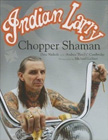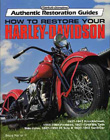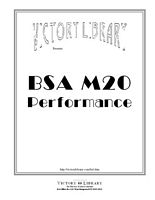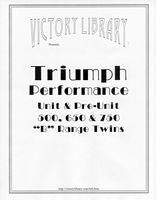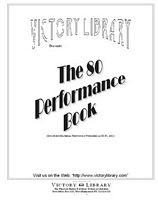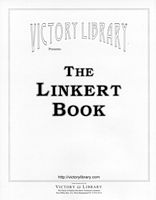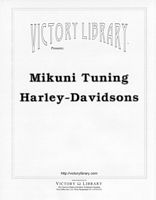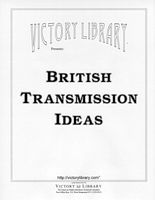|
|
 |
After WWII, returning servicemen had developed a liking for the lightweight machines with rear suspension they'd seen in England. Harley-Davidson was aware of this, but found their production lines running at capacity meeting the postwar demand for big twins. To meet this new challenge, they considered an alliance with one of the English makers to develop a lightweight machine.
At that time one of the Founder's grandchildren was at school in Cambridge. It was decided to have him make contact with the engineering staff at BSA to see if they'd be willing to help in designing a swing arm chassis for the proposed machine. The staff at BSA was eager for a chance to bring in sorely needed American Dollars to their coffers so they accepted the offer.
BSA had been developing a swing arm chassis for their competition machines, and decided to use the Harley prototype for a test bed for chassis components.
They decided that the prototype engine received from Harley would be a good fit but the generator would have to be relocated.
This problem was resolved by contacting Lucas and adapting one of their new alternators to fit between the engine and primary drive.
This meant lengthening the Harley mainshaft, but the BSA competition shop easily managed this by adapting a B33 500 mainshaft to fit the Harley motor. They also adapted twin taper roller bearings to fit this shaft at that time. Harley later used this same bearing setup on all their twins.
A 4 speed transmission, which had been developed for use with their new swing arm frame, was fitted behind the engine and a single row chain with compensating sprocket was used for primary drive. The front end was another BSA competition shop development, which incorporated aluminum sliders and hard chromed tubes. These were slated to be used on production machines, but due to the Korean War and aluminum shortages, steel sliders were substituted. The aluminum sliders didn't make it into production until 1970!
The front brake was another prototype from BSA's competition department. This also found use on later productions machines.
As for the engine, Harley decided that they would build up an engine built around the reliable 45" crankcase. The cylinders/heads were later to find their way onto the "K" series engines. It was decided to increase the displacement of the 45" to 61 inch to increase power and tractability in street usage. To do this the stroke of the 45" was increased to 4 13/16", and the bore increased .070 over the standard 45". Although these flywheels were never used in another machine by Harley, in later years a young engineer who had worked on the project engine remembered these flywheels and began marketing them on his own under the S&S label! High lift/duration cams which would later be used as "KHK" grind in the K models were also developed. They also developed a higher flow oil pump at this time to handle the increased heat and lubrication needs of the larger engine.
It was decided to combine both supply and scavenge in one body to streamline design. Again this pump found usage in the later "K & XL" series. With the supply pump relocated, there was room for a tach drive off the rear exhaust cam.
Two complete prototype machines were assembled at Small Heath's competition shop. These were tested on the local back roads of Birmingham and after some initial problems with the proper gearing, (the British weren't used to gearing for high torque/low revving engines!), the machines were found to be quite impressive by the day's standards. They also aroused rumors by the locals of some new type of Vincent being developed!
Unfortunately, by the time the engines had been assembled and the prototypes built and tested, the opportunity had been lost. Harley engineers had gone ahead and used the components developed for the hybrid project and come up with their own swingarm frame design machine. Of course, it was slower and heavier, but it wasn't "tainted" with foreign components! Meanwhile, BSA found that they didn't have the capacity to meet demands for their products and make components for Harley also. So the project was dropped. Of the two prototypes, one ended up in the recesses of the Harley museum, as Harley keeps one of each machine they ever build, and the other lay gathering dust in a back corner of BSA's competition shop.
Finally, in 1961, one of the engineers at BSA involved in the project retired and bought the machine that BSA had. After retirement, he immigrated to the U.S. and located in Upstate New York. There he worked part time for the local BSA dealer and licensed the Hybrid here. As it had never been registered in England, the Authorities declared it a 1961, for the year it entered the country. It was registered as a BSA as Harley would not recognize its existence. He only rode it occasionally before he died.
I found the machine in a barn on the widow's homestead under a mound of hay, with only the front wheel showing. I offered her the proverbial $50.00 bucks for the "pile of junk" in the barn and she accepted. She had kept the machine for years as her husband had always thought highly of it. She finally decided to part with it after I had talked to her quite a while, and heard some of this history. She later found papers of her husband's with the title that detailed this little known chapter of BSA/Harley collaboration. Click on any picture to see a larger view. |
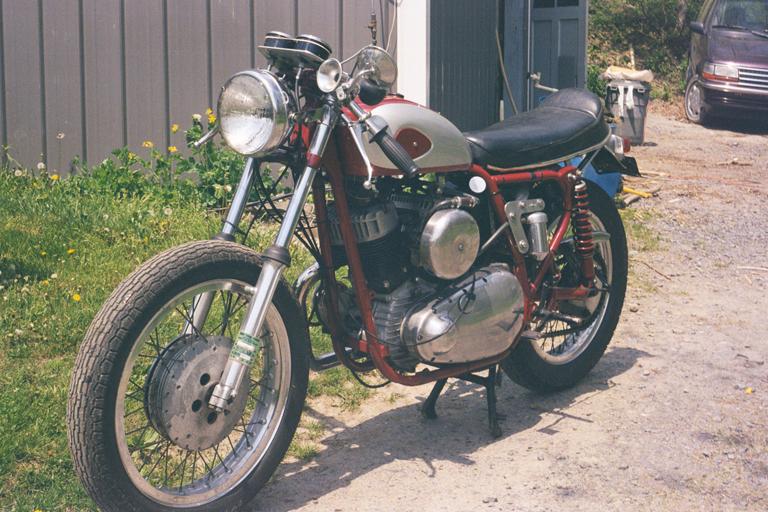 |
 |
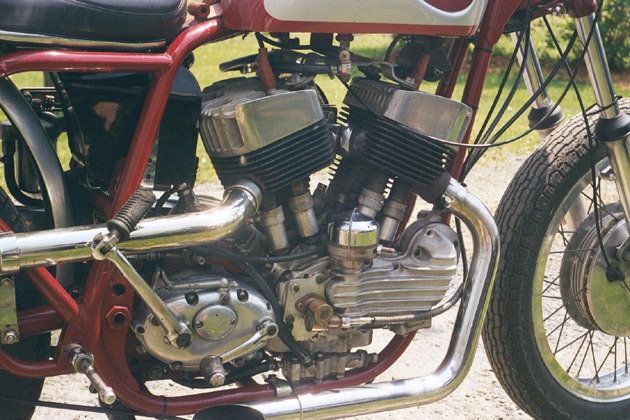 |
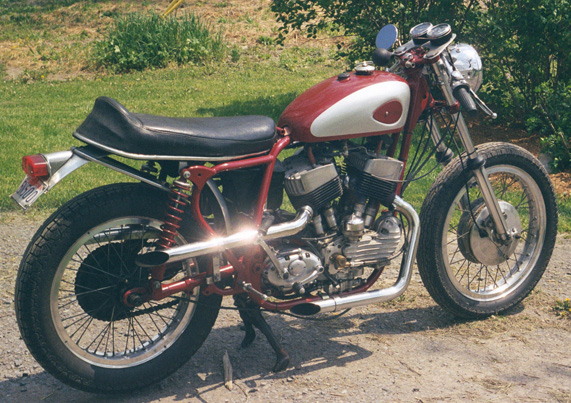 |
This is actually Dick Linn's 45-based cafe racer (made from pieces of this & that, hence the name). It's registered as a 1961 BSA, with engine serial # 47WLCR1001 (1947WL, cafe racer). The chassis and transmission is BSA A10 pre-unit. The motor is WL type, enlarged to 980cc with 4-13/16" stroker flywheels, with better breathing from K barrels and heads & 38mm Mikuni. Missing generator? Doesn't matter; there's an alternator under that nice alloy primary cover, looks like factory. Note the alloy rims. That's a full-width BSA drum brake in front. Note the Sportster oil pump in the 2nd photo, so the original feed pump drive off the rear exhaust cam can be used for the tachometer. Click here to see details and diagrams of how this was done:  |
|


